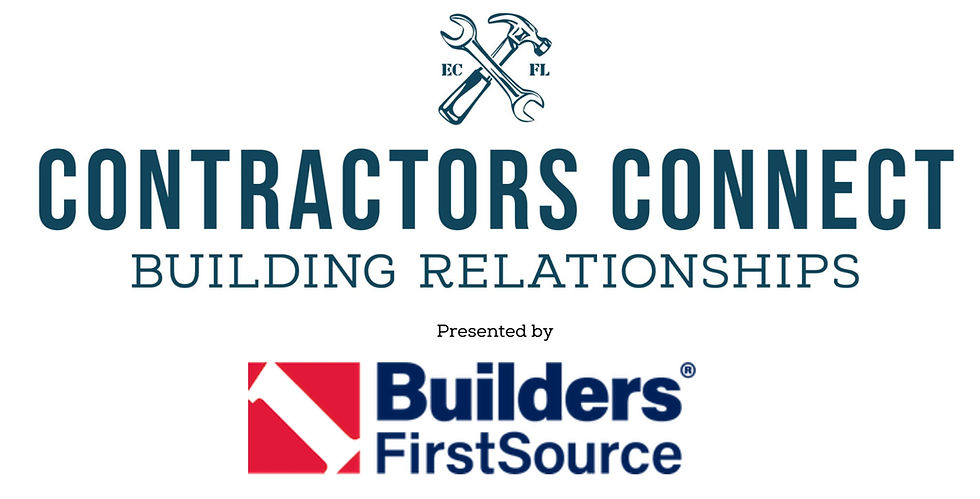Key Strategies for Contractors: Navigating Networking in 2025
- Erin Bakker
- Apr 8
- 3 min read
In 2025, effective networking is critical for contractors aiming to excel in a fast-changing marketplace. As the construction industry embraces new technologies, shifting market demands, and complex projects, the need for strong relationships is more important than ever. This post explores essential networking strategies designed to help contractors strengthen their connections and foster successful collaborations in the coming years.
Embrace Digital Networking Platforms
With technology evolving quickly, contractors must utilize digital networking platforms to connect with clients, suppliers, and peers. By 2025, construction-specific platforms will become increasingly available, allowing contractors to showcase their work and share valuable insights.
Participating in industry-focused forums and online groups enables the exchange of ideas and experiences. Keeping your profile current and engaging regularly can increase your visibility. For example, a contractor who shares insightful articles on a specialized platform might attract 30% more inquiries from potential clients compared to those who do not.

Attend Industry Events and Workshops
Face-to-face interactions still play a vital role in networking. Attending industry events, workshops, and seminars allows contractors to connect with important figures in their field and stay informed about new trends and innovations. These gatherings are perfect for learning, sharing insights, and creating lasting relationships.
Consider participating in trade shows focusing on new materials and technologies. A contractor who presents their work at a local workshop can increase their project opportunities by up to 25%, as participants recognize them as knowledgeable and reliable in their field.
Collaborate with Local Businesses
Networking isn't limited to seeking out new clients; it's also about forging partnerships with other local businesses. Collaborating with nearby suppliers, artisans, and service providers can yield significant mutual benefits.
For example, a contractor partnering with a local hardware store might secure lower material costs, while the store gains additional visibility through joint advertising efforts. Such collaborations can create a win-win scenario, broadening your reach and enhancing project quality.

Leverage Professional Associations
Joining relevant professional associations can offer numerous benefits. These organizations often host networking events and provide valuable resources to members, helping to foster industry connections.
Membership can also enhance your credibility as a contractor. By participating in committees or special interest groups, you're likely to encounter additional networking opportunities that can help you refine your expertise and expand your influence.
Utilize Client Referrals and Testimonials
Word-of-mouth referrals remain one of the most effective methods for attracting new clients. Happy customers can be your best ambassadors. It's essential to nurture these relationships.
Encouraging clients to share testimonials or recommend you to others can create a strong foundation of trust. Following up after project completion and requesting feedback not only builds loyalty but can also triple your chances of securing new business in the future.
Stay Active in Your Local Community
Actively engaging in your local community can significantly increase your networking potential. Participating in community service, sponsoring events, or attending local festivals allows contractors to establish personal connections.
Building goodwill through community involvement means people are more likely to recall your name when construction projects arise. This strategy helps cultivate a solid reputation and enhances local relationships, leading to increased referrals.
Invest in Continuous Learning
Networking involves personal growth as well as connecting with others. By investing in continuous learning—through certification courses, workshops, or seminars—you can gain valuable skills and knowledge that differentiate you from competitors.
Sharing this newfound expertise with your network fosters discussions and collaborative opportunities, creating a ripple effect that might lead to more projects and partnerships.
Foster Online Presence with Thought Leadership
In 2025, maintaining a strong online presence is essential. Creating informative content—such as blogs, videos, or podcasts—can establish you as a thought leader in your field.
Having an active personal website or profile on networking sites increases your visibility. Regularly sharing relevant industry content can attract others to engage with you, further widening your network. For instance, a contractor who posts weekly tips on social media could see a 40% increase in engagement from potential clients.
Be Authentic and Personable
Networking thrives on authenticity. People are drawn to contractors who are genuine and relatable.
Taking time to listen to others, offering help, and being honest about challenges builds strong connections. Remember that nurturing relationships requires time. Genuine interactions often lead to fruitful partnerships, benefitting everyone involved.
Wrapping Up
As contractors navigate the networking landscape in 2025, blending traditional and digital strategies will be crucial for building valuable relationships. By focusing on community involvement, collaboration, and authenticity, contractors can position themselves effectively in an evolving industry.
Implementing these strategies not only enhances your visibility but also creates a supportive network that fosters long-term success. Ultimately, effective networking is about establishing relationships that drive collaboration and innovation—two essential ingredients for success in the construction industry.






Comments